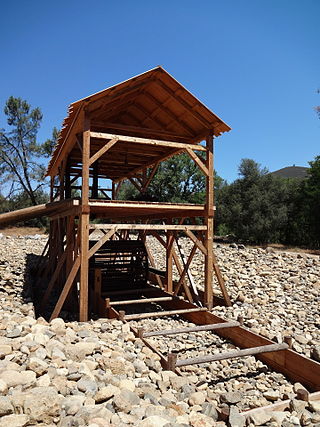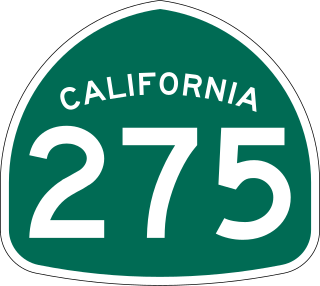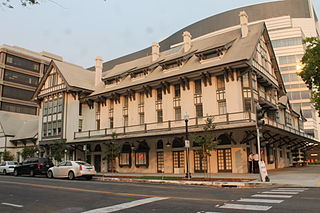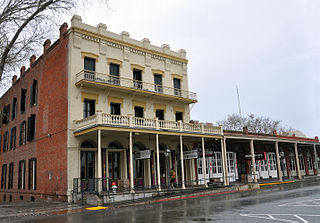
John Augustus Sutter, born Johann August Sutter and known in Spanish as Don Juan Sutter, was a Swiss immigrant who became a Mexican and later an American citizen, known for establishing Sutter's Fort in the area that would eventually become Sacramento, California, the state's capital. His employee James W. Marshall discovered gold, leading to the founding of the mill-making team at Sutter's Mill. Sutter, however, saw his own business ventures fail during the California Gold Rush, though those of his elder son, John Augustus Sutter Jr., were more successful.

Sacramento is the capital city of the U.S. state of California and the seat of Sacramento County. Located at the confluence of the Sacramento and American Rivers in Northern California's Sacramento Valley, Sacramento's 2020 population of 524,943 makes it the fourth-most populous city in Northern California, the sixth-most populous in the state, the ninth-most populous state capital,and the 35th most populous in the United States. Sacramento is the seat of the California Legislature and the governor of California. Sacramento is also the cultural and economic core of the Greater Sacramento area, which at the 2020 census had a population of 2,680,831, the fourth-largest metropolitan area in California.

Sutter's Mill was a water-powered sawmill on the bank of the South Fork American River in the foothills of the Sierra Nevada in California. It was named after its owner John Sutter. A worker constructing the mill, James W. Marshall, found gold there in 1848. This discovery set off the California gold rush (1848–1855), a major event in the history of the United States.

Sutter's Fort was a 19th-century agricultural and trade colony in the Mexican Alta California province. Established in 1839, the site of the fort was originally part of a utopian colonial project called New Helvetia by its builder John Sutter, though construction of the fort proper would not begin until 1841. The fort was the first non-Indigenous community in the California Central Valley, and saw grave mistreatment of Indigenous laborers in plantation or feudal style conditions. The fort is famous for its association with the Donner Party, the California Gold Rush, and the formation of the city of Sacramento, surrounding the fort. It is notable for its proximity to the end of the California and Siskiyou Trails, which it served as a waystation.

Old Sacramento State Historic Park occupies around one third of the property within the Old Sacramento Historic District of Sacramento, California. The Old Sacramento Historic District is a U.S. National Historic Landmark District. The Historic District is sometimes abbreviated as Old Sacramento, or Old Sac, and since the 1960s has been restored and developed as a significant tourist attraction.

State Route 49 is a north–south state highway in the U.S. state of California that passes through many historic mining communities of the 1849 California gold rush and it is known as the Golden Chain Highway. The highway's creation was lobbied by the Mother Lode Highway Association, a group of locals and historians seeking a single highway to connect many relevant locations along the Gold Rush to honor the 49ers. One of the bridges along SR 49 is named for the leader of the association, Archie Stevenot.

State Route 275 is an unsigned state highway connecting West Sacramento, California and Downtown Sacramento. Since 1996, the highway has been legally defined to be the length of the Tower Bridge crossing the Sacramento River. Prior to that year, SR 275 was also known as the West Sacramento Freeway, and was a short spur connecting Interstate 80 Business / U.S. Route 50 in West Sacramento, and the Tower Bridge. SR 275 also extended east into Sacramento along the Capitol Mall from the bridge to 9th Street, just west of the California State Capitol. West Sacramento completed a project to replace the freeway with a pedestrian-friendly street initially named Tower Bridge Gateway. The street was renamed Cabaldon Parkway in honor of former West Sacramento mayor Christopher Cabaldon.

Sacramento Valley Station is an Amtrak railway station in the city of Sacramento, California, at 401 I Street on the corner of Fifth Street, built in 1926 on the site of China Slough. It is the thirteenth busiest Amtrak station in the country, and the second busiest in the Western United States. It is served by four different Amtrak train routes and connecting Amtrak Thruway motorcoaches. It is also the western terminus for the Gold Line of the SacRT light rail system and the Route 30 bus serving California State University, Sacramento.
Downtown Commons, formerly known as Sacramento Downtown Plaza, Westfield (Shoppingtown) Downtown Plaza and Downtown Plaza, is a two-level outdoor mixed-use entertainment and shopping complex operated by JMA Ventures, LLC, located along the alignment of K Street in downtown Sacramento, California, United States, near the State Capitol building. The complex is bordered by J Street to the north, L Street to the south, 7th Street to the east and 4th Street to the west. Downtown Commons' previous format was a mainly two-level outdoor shopping mall commonly known as Downtown Plaza, despite numerous official name changes over the years. The majority of the site has been redeveloped, centering on Golden 1 Center, home of the NBA's Sacramento Kings. The section between 5th and 7th Streets was demolished in 2014 to make room for Golden 1 Center, as well as The Sawyer, a 250-room boutique hotel operated by Kimpton Hotels immediately north of the arena site. The remaining standing section between 4th and 5th Streets was also redeveloped a few years later in association with the arena project.

The Capitol Mall or Capitol Mall Boulevard is a major street and landscaped parkway in the state capital city of Sacramento, California. Formerly known as M Street, it connects the city of West Sacramento in Yolo County to Downtown Sacramento. Capitol Mall begins at the eastern approach to the Tower Bridge, and runs east to the California State Capitol.
Boulevard Park is a historic residential neighborhood in Sacramento, California. It is also the Boulevard Park Historic District, listed on the National Register of Historic Places.

The Sacramento Historic City Cemetery, located at 1000 Broadway, at 10th Street, is the oldest existing cemetery in Sacramento, California. It was designed to resemble a Victorian garden and sections that are not located in level areas are surrounded by brick or concrete retaining walls to create level terraces. The cemetery grounds are noted for their roses which are said to be among the finest in California.

The Orleans Hotel is a building listed as a California Historical Landmark. Formerly a prominent hotel in Sacramento, California, it now serves as upscale apartments in Old Sacramento.

The Senator Hotel (1924–1979) was a nine-story, 400-room Italian Renaissance-style hotel in Sacramento, California located at 12th and L streets across from the California State Capitol building that served as a nexus of California political and social activity for more than 50 years. Opened in 1924, the Senator Hotel was where Arthur Samish, one of the most influential and powerful individual lobbyists in the history of California, maintained a suite during the 1930s and 1940s. President Gerald Ford spent the night at the Senator Hotel before the September 5, 1975, assassination attempt on him by cultist Manson family disciple Squeaky Fromme. Although the Senator Hotel was listed on the National Register of Historic Places in May 1979, the hotel was closed two months later and shuttered with panels placed over the windows that same year. The structure was renovated and then reopened in 1983 as an office building under the name Senator Hotel Office Building, giving lobbyists short-walking-distance access to California's state politicians.

The Merrium Apartments, listed on the National Register of Historic Places, was a historic building located in Downtown Sacramento, California.

The J. C. Carly House, listed on the National Register of Historic Places, is a historic home located in Curtis Park, Sacramento, California.

The Old Tavern is a historic building listed on the National Register of Historic Places located in Sacramento, California.

.

The Trap, originally known as the Ingleside Saloon, is a historic bar in Sacramento, California. It is one of the city's oldest continuously operated businesses and the oldest surviving structure in the city's Pocket-Greenhaven neighborhood. In 2009, the City of Sacramento designated The Trap a historical landmark, noting that the building is one of the oldest and last remaining structures associated with the Portuguese agricultural community that were among the first settlers of the Pocket-Greenhaven neighborhood.


















